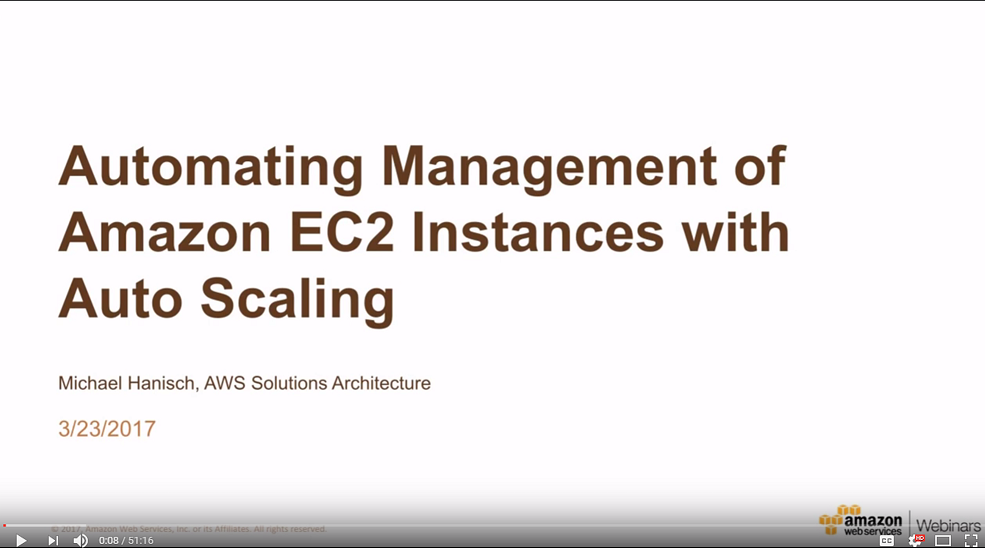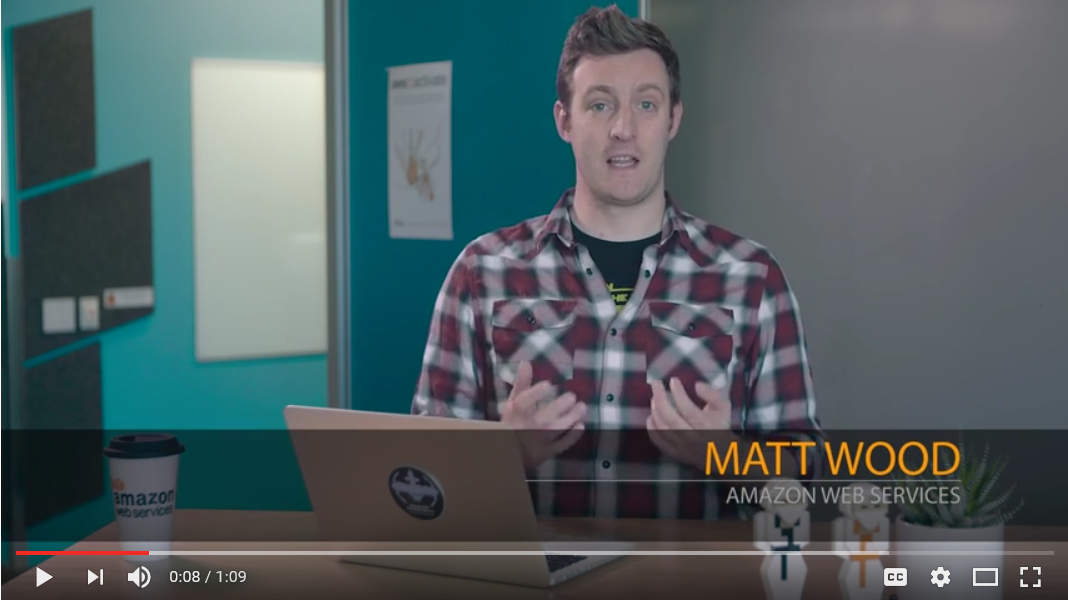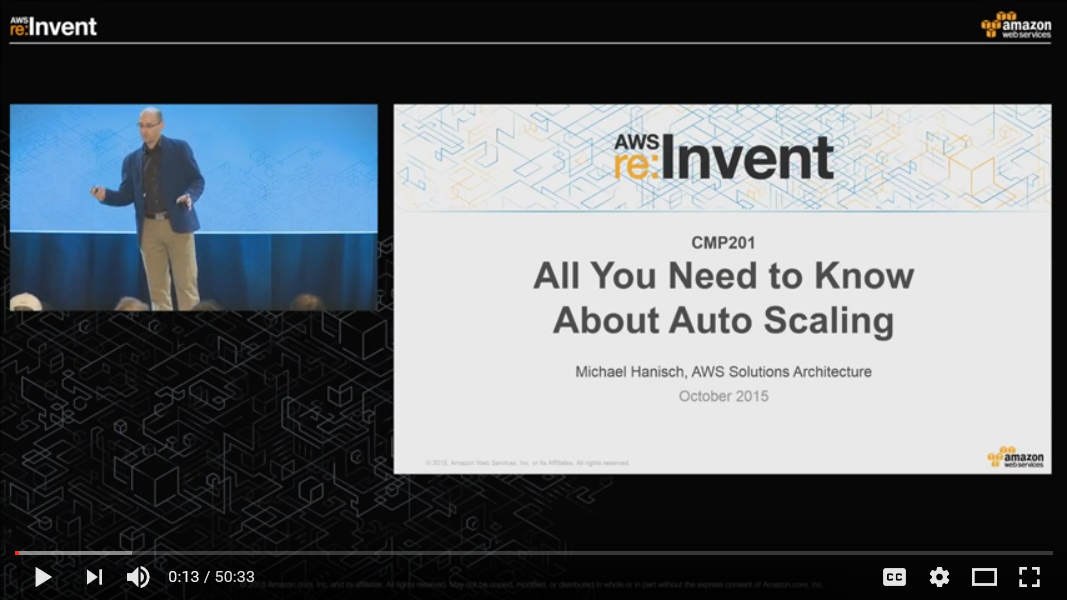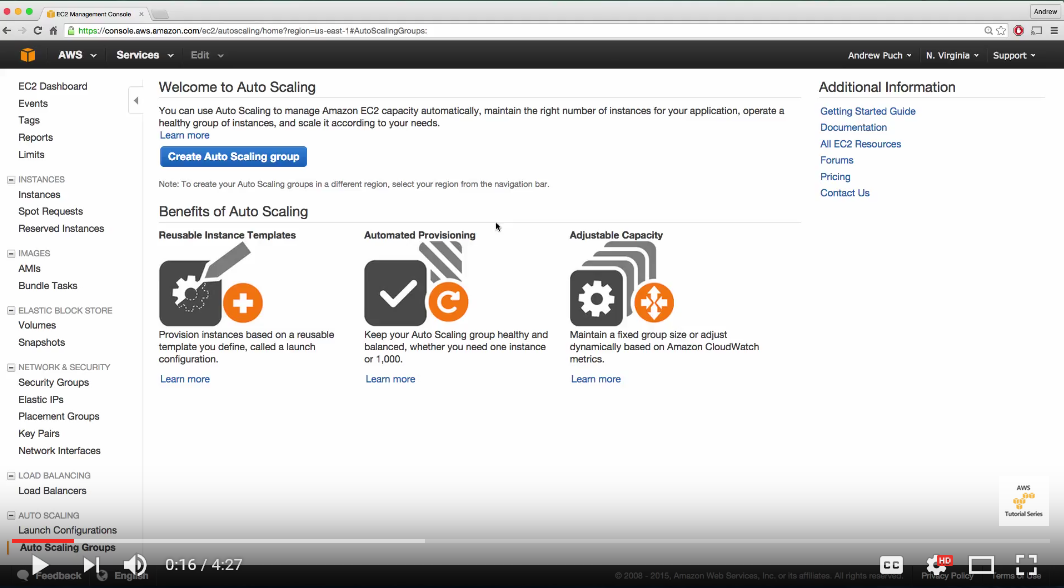- AutoScaling›
- Getting started with Auto Scaling
Getting Started with Auto Scaling
There are several ways to get started with Auto Scaling. You can set up Auto Scaling through the AWS Management Console, with the AWS Command Line Interfaces (CLI), or with AWS SDKs. To learn more, see below for tutorials, blogs and videos.
Getting Started with the AWS Management Console
1
Step 1: Sign into the AWS Management Console
Create an account and sign into the console. With Amazon EC2, you pay only for what you use. If you are a new AWS customer, you can get started with Amazon EC2 for free. For more information, see AWS Free Tier.
2
Step 2: Create a launch template
In the Amazon EC2 Dashboard, choose "Launch Templates" to create a launch template, specifying a name, AMI, instance type, and other details. Below are some guidelines on setting up your first launch template.
Choose an Amazon Machine Image (AMI): We recommend the Amazon Linux 2 AMI (free-tier eligible).
Choose an instance type: We recommend the t2.micro (free-tier eligible).
Security group: You have the option to configure your virtual firewall.
3
Step 3: Create an Auto Scaling group
Using the Auto Scaling wizard, create an Auto Scaling group specifying a name, size, and network for your Auto Scaling group.
4
Step 4: Add Elastic Load Balancers (Optional)
When you set up Auto Scaling with Elastic Load Balancing, you can automatically distribute incoming application traffic across Amazon EC2 instances within your Auto Scaling groups to build highly available, fault-tolerant applications.
Associate your load balancer with your Auto Scaling group to distribute traffic for your application across a fleet of EC2 instances that can scale with demand.
You must first create a load balancer.
Associate your load balancer with your Auto Scaling group to distribute traffic for your application across a fleet of EC2 instances that can scale with demand.
You must first create a load balancer.
5
Step 5: Configure Scaling Policies (Optional)
Configure scaling policies for your Auto Scaling group.
Getting Started with the AWS Command Line Tools (CLI)
You can access the features of Amazon Auto Scaling using the AWS CLI, which provides commands for a broad set of AWS products, including Amazon EC2 and Amazon CloudWatch. For more information about the commands for Auto Scaling, see the Auto Scaling section of the AWS Command Line Interface Reference.
Getting Started with the AWS SDKs
Get started with Auto Scaling by using APIs tailored to your programming language or platform, or AWS Mobile SDK to help you build high-quality mobile apps quickly and easily. See Tools for Amazon Web Services for more information.
Tutorials
Getting started with EC2 Auto Scaling: A step-by-step tutorial
Step-by-step tutorial on setting up a scaled and load-balanced application
Learn more about EC2 Auto Scaling and Elastic Load Balancing
Getting started with Elastic Load Balancing
Blogs
Automating Blue/Green Deployments of Infrastructure and Application Code using AMIs, AWS Developer Tools, & Amazon EC2 Systems Manager
New – Target Tracking Policies for EC2 Auto Scaling
New – Target Tracking Policies for EC2 Auto Scaling (Jeff Barr, AWS, Jul 2017)
New – Auto Scaling for Amazon DynamoDB
New – Auto Scaling for Amazon DynamoDB (Jeff Barr, AWS, Jun 2017)
Performing Blue/Green Deployments with AWS CodeDeploy and Auto Scaling Groups
Performing Blue/Green Deployments with AWS CodeDeploy and Auto Scaling Groups (Jeff Levine, Apr 2017)
Configure Amazon EC2 Instances in an Auto Scaling Group Using State Manager
Configure Amazon EC2 Instances in an Auto Scaling Group Using State Manager (Amjad Hussain, AWS, Mar 2017)
Auto Scaling for EMR Clusters
Auto Scaling for EMR Clusters (Jeff Barr, AWS, Nov 2016)
Dynamically Scale Applications on Amazon EMR with Auto Scaling
Dynamically Scale Applications on Amazon EMR with Auto Scaling (Jonathan Fritz, Nov 2016)
Building a Backup System for Scaled Instances using AWS Lambda and Amazon EC2 Run Command
Building a Backup System for Scaled Instances using AWS Lambda and Amazon EC2 Run Command (Diego Natali and Vyom Nagrani, AWS, Nov 2016)
Fleet Management Made Easy with Auto Scaling
Fleet Management Made Easy with Auto Scaling (Chris Barclay, AWS, Oct 2016)
Auto Scaling for EC2 Spot Fleets
Auto Scaling for EC2 Spot Fleets (Jeff Barr, AWS, Sep 2016)
Auto Scaling AWS OpsWorks Instances
Auto Scaling AWS OpsWorks Instances (Daniel Huesch, AWS, Jul 2016)
Automatic Scaling with Amazon ECS
Automatic Scaling with Amazon ECS (Chris Barclay, AWS, May 2016)
Using AWS Lambda with Auto Scaling Lifecycle Hooks
Using AWS Lambda with Auto Scaling Lifecycle Hooks (Vyom Nagrani, AWS, Dec 2015)
Instance Protection for Auto Scaling
Instance Protection for Auto Scaling (Jeff Barr, AWS, Dec 2015)
Under the Hood: AWS CodeDeploy and Auto Scaling Integration
Under the Hood: AWS CodeDeploy and Auto Scaling Integration (Jonathan Turpie, AWS, Nov 2015)
Videos

Automating Management of Amazon EC2 Instances
Learn about how to automate launches with Launch Configurations, configure the software environment before your instance accepts traffic using Lifecycle hooks, and how to create a resilient multi-AZ fleet to run your application with minimal effort.

Auto Scaling - the Fleet Management Solution for Planet Earth
AWS and NASA Jet Propulsion Laboratory (JPL) discuss how Auto Scaling offers an advantage to everyone – whether it’s basic fleet management to keep instances healthy as an EC2 best practice, or dynamic scaling to manage “extremes”.
Videos

Lifecycle Hooks Made Easier
Dr. Matt Wood, Director Product Marketing, AWS discusses how Auto Scaling emits an event using Amazon CloudWatch Events when an Amazon Elastic Compute Cloud (EC2) instance is ready to execute a launch or termination lifecycle hook.

All You Need to Know About Auto Scaling
This video introduces the basics of how to use Auto Scaling before moving on to more advanced topics such as mixing Spot and On-Demand instances to optimize cost or strategies for blue/green deployments.

Auto Scaling EC2 with Custom Scaling Policy
This video shows how to set-up up Auto Scaling EC2 instances and put them into an Elastic Load Balancer (ELB). You will also learn how to set-up a custom scaling policy that is triggered from a CloudWatch alert.
Get Started with AWS for Free
Did you find what you were looking for today?
Let us know so we can improve the quality of the content on our pages